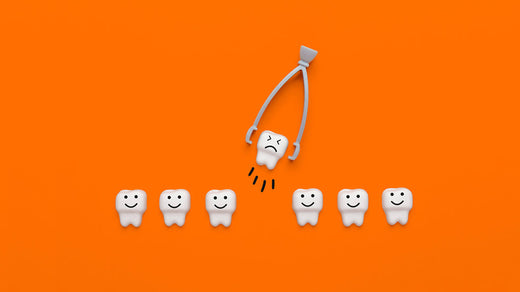
How Long Should You Wait to Exercise After Tooth Extraction?
Tooth extractions, whether routine or complex, require careful post-procedure care to ensure proper healing. A common question many have is: how long should you wait to exercise after a tooth extraction? While staying active is essential for overall health, exercising too soon after dental surgery can lead to complications, such as prolonged bleeding or delayed healing.
Let’s explore the guidelines to help you strike the right balance between recovery and maintaining your fitness routine.

Why Rest is Crucial After Tooth Extraction
After a tooth extraction, your body requires time to heal. This healing process involves the formation of a blood clot at the extraction site, which is crucial for preventing dry socket—a painful condition where the clot is dislodged, exposing the bone and nerves underneath. Any vigorous activity, including exercise, can increase blood flow and pressure, potentially disrupting the clot and prolonging recovery.
How Long Should You Wait Before Exercising?
1. Immediate Rest Period (First 24–48 Hours)
The first 24–48 hours after a tooth extraction are critical. During this time, you should avoid any physical activity that could elevate your heart rate or blood pressure. Rest and relaxation are essential to allow the blood clot to stabilize and reduce swelling at the site.
2. Light Activities (48–72 Hours Post-Extraction)
After 2–3 days, you may gradually reintroduce light activities, such as walking or gentle stretching. Avoid any form of exercise that involves bending over or straining, as this could increase pressure around the extraction site.
3. Moderate to Intense Exercise (After 1 Week)
For most people, moderate to intense exercise can usually be resumed after 7 days. However, this timeline can vary depending on factors such as the complexity of the extraction and individual healing rates. Always consult your dentist or oral surgeon before resuming high-impact activities like running, weightlifting, or aerobic exercises.
Tips for Exercising Safely After Tooth Extraction
- Listen to Your Body: If you experience pain, throbbing, or bleeding during or after exercise, stop immediately and rest.
- Stay Hydrated: Proper hydration aids healing and reduces the risk of complications.
- Avoid High-Impact Movements: Stick to low-impact activities like walking or yoga during the first week.
- Keep the Mouth Clean: Rinse gently with warm salt water after exercise to keep the extraction site clean.
- Follow Your Dentist's Advice: Always adhere to the specific recommendations given by your dentist.
When to Contact Your Dentist
If you notice any of the following after exercising post-extraction, contact your dentist immediately:
- Persistent bleeding
- Severe pain or throbbing
- Signs of infection, such as swelling, fever, or pus
- A foul taste in your mouth (possible dry socket)
How long you should wait to exercise after a tooth extraction largely depends on the complexity of the procedure and your body’s healing process. While light activity can be resumed within a few days, it’s best to wait at least a week before engaging in intense workouts. Always prioritize your recovery and consult your dentist to ensure a safe return to your fitness routine.

Leave a comment